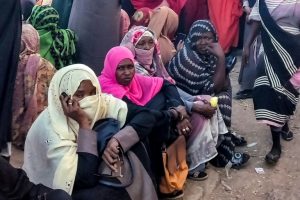擒数网 (随信APP) | 农村老家变得越来越冷清,无法改变

擒数网 (随信APP) | 农村老家变得越来越冷清,无法改变
【微信/公众号/视频号/抖音/小红书/快手/bilibili/微博/知乎/今日头条同步报道】

农村越来越人少,越来越冷清。想要重现热闹不太可能,除非整体倒退。
人群依附于生产资料,农业社会人群疏密依照土地产粮自然扩散流动。
工业社会人口向工业生产地聚集,农村只能依靠产值挽留人口。
工业的各个环节具有集聚性,老家农村无工业优势。
农村不振兴不算失败,产值上限由需求端决定。
强行留存人口需降低生活水平,人口爆炸不会恢复热闹。
农业产值被工业化碾压,农村社会形态随之解体。
不需要那么多农民,城镇化不可逆。
生产资料聚集哪里就繁荣,现在资本向城市流动。
农村教育医疗不足,中间代表工作收入的一代无未来。
城市无法容纳所有就业者,找不到工作会回老家。
英文版:
Rural areas are getting emptier and quieter year by year. There is a sense of reluctance and a hope that in the future, there might be a chance for a lively revival, perhaps through policy support or some other fortunate circumstance. However, upon reflection, it seems unlikely, unless the entire human society regresses.
People rely on the means of production. The distribution of people is based on the allocation of means of production. In agricultural societies, people rely on land and food, and the density of people naturally spreads out according to the production of land. Where there are more people and less land, they flow out; where there are fewer people and more land, they attract population, maintaining a general balance.
In industrial societies, people depend on various aspects of industrial production, and the population gathers where industrial production is located. Rural areas can only retain the remaining population based on their production value ratio.
Various aspects of industry, such as mining, processing, research and development, finance, inherently have a congregating nature. They concentrate on resource-rich areas, areas with geographic advantages, areas with early advantages, political and cultural research centers.
It is impossible for rural areas to truly revitalize, as there is hardly any industry there that has a comparative advantage. The remaining tourism industry also cannot support many people.
It is also erroneous to consider rural areas as a failure if they are not revitalized, or that leaving land idle without industrial use is a waste or a loss of GDP. In reality, the upper limit of this part of the GDP is determined by the demand side, and placing production in major cities is more advantageous overall.
If rural areas are forced to retain a population far exceeding their production value ratio, then this population must accept a significantly lower average living standard than that of industrial societies. This is meaningless and contrary to social laws.
Even if the entire country proactively gives birth to more babies, leading to a population explosion, the rural population will not return to its former liveliness proportionally. Population explosions, due to the limited constraints of land, will continue to reinforce economies of scale, further widening the gap between agricultural and industrial production values.
The original social structure of the rural hometown, due to industrialization crushing the original agricultural production value, will gradually disintegrate and decline.
Social Transformation
In Spain, where agriculture accounts for a large proportion, inland areas are nearly deserted; in Japan, high subsidies, tariffs, and other measures set high barriers for imports and strive to increase food self-sufficiency, leading to expanding deserted zones.
Not to mention places like Russia; even in picturesque Switzerland, where agriculture is well-developed and the countryside is beautiful, in the absence of high-profit industries such as finance and precision manufacturing, hungry Swiss mercenaries had to travel across Europe to make a living.
The productivity of the land itself is limited, and it depends on the whims of nature. Even after a good harvest, there may be situations of "three to five doublings." In other words, the returns are limited, there is a constant risk of returns being reduced to zero, and investments depend on market conditions, making it an unfavorable investment option.
Under the mechanized large farm model in the United States, farmland continues to depreciate, and only big capitalists like Gates engage in strategic investments based on diversification and full industry chains.
Moreover, domestic farmland does not circulate in a capitalistic manner; even wealthy tycoons, wanting to acquire thousands of acres of land and build luxurious country estates, cannot achieve that, or at least cannot do so freely. In other words, resources cannot be efficiently allocated from a capital perspective.
Without homesteads, without pathways, it's difficult for urban residents to actualize exclusive villas. I have a relative who has been living in the city; all the procedures for the homestead of the old house in the village are complete. He wanted to tear down the old house and build a new one to retire in the village, but faced various obstacles, and was even informed that if the old house collapsed, the village committee would reclaim it. Nowadays, finding a craftsman to repair the old wooden and mud house is almost impossible...
The legal environment and various bizarre situations in rural areas are natural enemies of investors.
Unemployment
Revitalizing rural areas does not simply depend on a large population; only with a small population can there be more land per capita, and only with more per capita land can revitalization be possible. When there are more people and less land, even eating becomes a problem, making revitalization impossible.
- Zhao Jia
In Yidu, Hubei Province, rural areas are like this; after the eighth day of the lunar month, most young people leave for work again. These young people, in their thirties and forties, if they did not earn money in the city, did not buy a house in the city, they will return to the countryside.
Except for a bit less money, life in the countryside is quite comfortable. For example, right now I am sitting by the fire.
- sharpsnake
The concept of rural revitalization is meaningless; the main way to improve the lives of rural people is to turn them into urbanites. China does not need so many farmers; in my hometown, most of the fields have been leased to large-scale plantations. In the era of mechanization, there is little pressure for one person to cultivate 100 acres. Calculating this, with 1.8 billion acres of cultivated land, 18 million full-time farmers would be sufficient. With some fine agriculture and places with low levels of mechanization, approximately 50 million farmers would be enough.
- Skyzh1
Urbanization is irreversible, and the countryside will eventually become large-scale grain producers, adopting a farm model, with the remaining population moving to cities to become citizens and industrial workers.
- Choice Greater than EffortV
Where means of production gather, there will be prosperity. In the past, the most important means of production was land; therefore, even in sparsely populated areas, as long as they could produce food, people would be there. Now, the most important resource is capital; where capital flows, prosperity follows. Therefore, the population will continue to flow to cities, as there is no solution.
- Niu Wushi Six
In a county-level city under Zhengzhou, with a GDP ranking not far behind, there are no high schools in rural areas. Those with slightly better conditions all go to school in the city. Education and healthcare represent the future and the older generation, respectively; the middle generation needs work and income.
Can rural areas provide these?
Does the countryside have a future?
The answer is, there is no future.
- ganggu
Turnaround will come soon. Urban areas will not be able to accommodate so many jobs. When you cannot find work, have to pay for housing, and face high costs of living, you will return to your hometown yourself.
Source: Jisilu WeChat official account
老家农村变冷清,不可逆
#老家农村变冷清不可逆
关注流程:打开随信App→搜索擒数网随信号:973641 →订阅即可!
公众号:擒数网 抖音:擒数网
视频号:擒数网 快手:擒数网
小红书:擒数网 随信:擒数网
百家号:擒数网 B站:擒数网
知乎:擒数网 微博:擒数网
UC头条:擒数网 搜狐号:擒数网
趣头条:擒数网 虎嗅:擒数网
腾讯新闻:擒数网 网易号:擒数网
36氪:擒数网 钛媒体:擒数网
今日头条:擒数网 西瓜视频:擒数网




